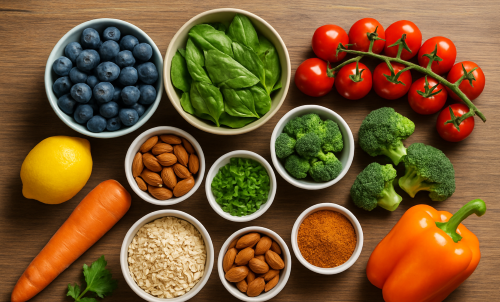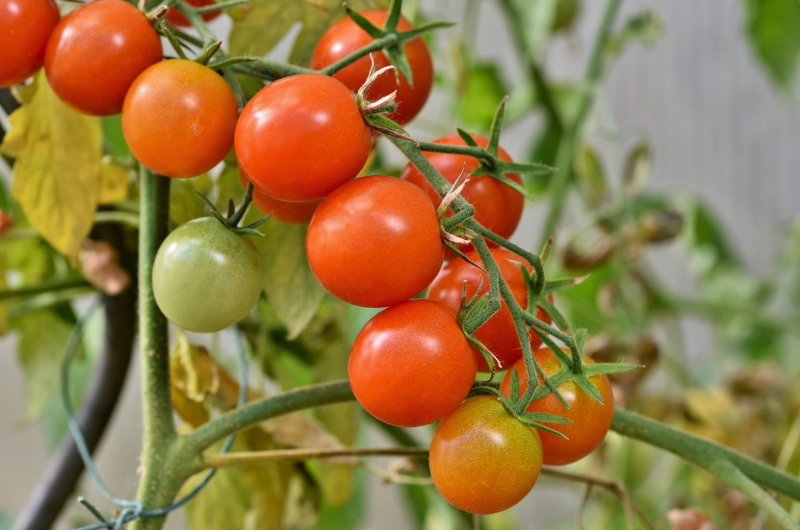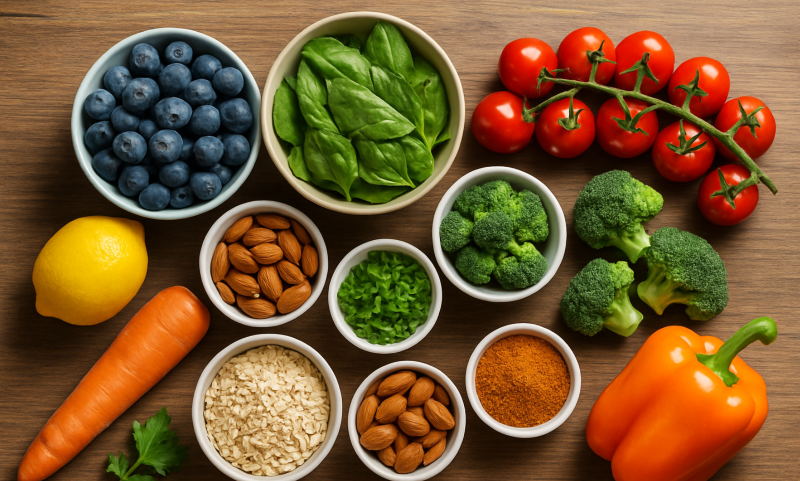
Antioxidant-rich foods like fruits, vegetables, whole grains, nuts, and herbs protect cells from oxidative stress and support long-term health. Simple, everyday choices can make a lasting difference.
By Sergio Toledo
Editor-in-Chief, Heed to Heal
Introduction
Antioxidants might sound like a scientific concept, but they’re simply natural compounds that help protect your body’s cells from everyday stress. They work quietly in the background, supporting your health in ways that may not be obvious but are deeply important. From bright fruits to earthy vegetables, antioxidant-rich foods are already part of many common meals, whether we realize it or not.
What makes these foods so special is their accessibility. You don’t need expensive supplements or complicated health products to benefit from antioxidants. They can be found in colorful produce, whole grains, herbs, nuts, and even in something as simple as a cup of tea. These everyday choices slowly build a foundation of protection that supports your overall well-being.
Learning more about antioxidant-rich foods can help you view the ingredients on your plate differently. They aren’t just flavors or textures. They’re quiet allies, working consistently to help your body stay balanced, strong, and well-nourished over time.
Why Antioxidants Matter
Every day, your body naturally produces molecules called free radicals as part of its normal processes. Environmental factors like pollution, stress, and smoke can also increase their presence. When these molecules build up, they create oxidative stress, which can damage cells over time. Antioxidants help neutralize free radicals, reducing their impact and supporting your body’s ability to repair itself.
Unlike quick fixes, antioxidants work best through steady, long-term intake. Including them regularly in your diet won’t create immediate dramatic changes, but over time they contribute to stronger cellular health, a more resilient immune system, and better protection against everyday wear and tear. This gentle, steady support is what makes them so valuable.
Best of all, antioxidant-rich foods are easy to find and integrate into daily routines. Many people are already consuming some of them without realizing their benefits. Adding a little more variety can strengthen that natural support without requiring major lifestyle shifts.
Colorful Fruits and Vegetables
Fruits and vegetables are among the best sources of antioxidants, and their colors offer hints about what they contain. Brightly colored produce is typically packed with plant compounds that help protect the body from cellular stress. A simple way to remember this is to “eat the rainbow.” Each color represents different nutrients, so variety matters just as much as quantity.
Here are some excellent antioxidant-rich produce options:
- Berries: high in anthocyanins that support heart and brain health.
- Tomatoes: a source of lycopene, which supports skin and heart health.
- Bell peppers and carrots: rich in vitamin C and beta-carotene.
- Leafy greens: packed with a wide range of plant compounds that nourish cells.
By mixing different colors and textures, you ensure your body receives a balanced blend of antioxidants. This approach can be as simple as adding berries to breakfast, enjoying a salad with greens and peppers, or cooking with tomatoes and herbs. Over time, these small, consistent choices add up to a powerful form of support.
Whole Grains, Nuts, Herbs, and Everyday Additions
Antioxidants aren’t limited to produce. Whole grains, nuts, seeds, and herbs also offer impressive benefits. Whole grains provide compounds that support cell health, while nuts and seeds are rich in vitamin E, known for its role in protecting skin and supporting immune function. Adding these ingredients into your daily meals can increase your antioxidant intake in a subtle but meaningful way.
Herbs and spices are another underestimated source. Turmeric, oregano, cinnamon, rosemary, and many others contain concentrated amounts of beneficial compounds. A small sprinkle over a meal may not seem like much, but those little touches can contribute to long-term health. Even something as simple as sipping green tea in the afternoon can gently increase your intake.
What makes antioxidants easy to work with is how naturally they fit into everyday meals. A bowl of oatmeal topped with berries and seeds, a salad with greens and tomatoes, or a roasted vegetable dish seasoned with herbs can all deliver quiet, steady support. You don’t have to follow rigid rules—just make thoughtful choices with ingredients that taste good and nourish your body at the same time.
References
- Frei, Balz. “Efficacy of Dietary Antioxidants to Prevent Oxidative Damage and Disease.” American Journal of Medicine, 1994.
- Liu, Rui Hai. “Health Benefits of Fruit and Vegetables Are from Additive and Synergistic Combinations of Phytochemicals.” American Journal of Clinical Nutrition, 2003.
- Carlsen, Monica H. et al. “The Total Antioxidant Content of More Than 3100 Foods.” Nutrition Journal, 2010.
Originally published by Heed to Heal, 10.15.2025, under the terms of a Creative Commons Attribution-NonCommercial-NoDerivatives 4.0 International license.





